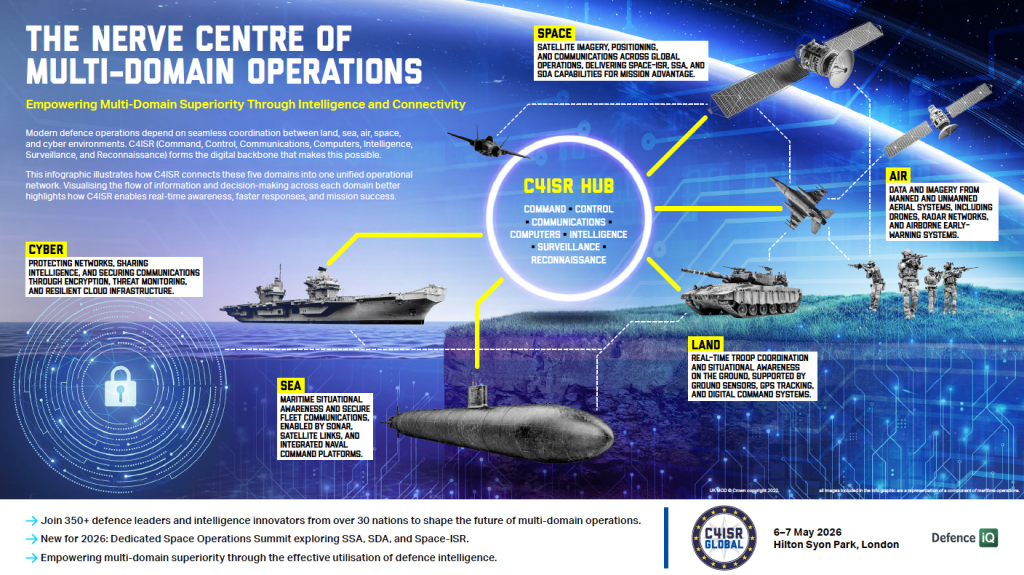
C4ISR Global - 2026 Agenda
C4ISR Global is returning for its 13th annual conference on the 6th - 7th May 2026 in Hilton Syon Park hotel, London, with a focus on future international C4ISR requirements, leveraging technological advantage and maintaining resilience across interconnected systems.
NEW FOR 2026: A dedicated Space Operations Summit will run simultaneously with the main programme, providing a focused platform to explore the strategic integration of space-based capabilities into multi-domain operations. Key themes will include Space Situational Awareness (SSA), Space Domain Awareness (SDA), and Space-ISR, reflecting the growing importance of space as an operational domain.
Download the agenda now to learn more!

The Nerve Centre of Multi-Domain Operations
See how C4ISR connects the battlespace. From space to sea and every environment in between - download our expert infographic to understand how intelligence flows through the C4ISR network to enable faster, smarter military decision-making.

C4ISR Post Show Report 2025
C4ISR Global 2025 convened over 300 senior defence leaders, government officials, and industry experts from more than 30 countries at Hilton Syon Park, London, on 29–30 April 2025. The event provided a dedicated platform to explore the evolving role of Command, Control, Communications, Computers, Intelligence, Surveillance and Reconnaissance (C4ISR) in shaping the future of multi-domain operations.
This official Post-Show Report captures key themes, speaker insights, and operational takeaways from two days of high-level discussion and debate. With expert contributions from NATO, UK Strategic Command, the US Joint Chiefs of Staff, and other international authorities, the report reflects on critical issues including intelligence modernisation, AI integration, data-driven decision-making, and the transformation of ISR capabilities across air, land, sea, space, and cyber domains.
Key features of the report include:
- Executive summaries of all keynote addresses and presentations In-depth analysis of emerging trends and strategic challenges in ISR Coverage of core topics including AI, uncrewed systems, resilience, and digital infrastructure
- Highlights from panel discussions on interoperability, ethical considerations, and future capability development
- Contributions from senior leaders across NATO, UK MOD, DE&S, the US DoD, and more
- Insights into civil-military integration, procurement reform, and coalition readiness
The report offers a comprehensive overview for those who attended and an essential reference point for stakeholders looking to stay informed on C4ISR advancements. It underscores the importance of continued collaboration, adaptability, and innovation in maintaining information superiority and operational advantage.

C4ISR Market Report 2024-2028: Selected Markets
As more complex issues arise, more comprehensive responses are needed. Military branches can no longer tackle these complex issues alone but cohesively with other organisations (both military and civil). In order to make sure that multi-facet responses are effective, an effective C4ISR system is necessary, translating to several opportunities in the medium and long term for the industry. This market report summarises these opportunities in an easy-to-read document.

The Case for European Joint All Domain Command and Control
When facing a near-peer on the world stage, the one who can make the best decisions the fastest will hold the advantage. This decision-making advantage will be crucial as it will best use the available, if not limited, resources. Recognising this, forces face several internal and external challenges in achieving this, whether it be the challenges posed by massive quantities of data across domains that need to be processed or the activities and technologies employed by near-peers that try to degrade your decision-making capabilities. The US response to this is Joint All Domain Command and Control (JADC2), a strategy for combining sensors across domains, Artificial Intelligence and Machine Learning, and effectors to achieve decision superiority. On the surface, this strategy seems exactly what Europe needs in the face of a more aggressive Russia. However, challenges abound. This paper explores JADC2 and its applicability to the European context.

2025 C4ISR Global Conference - Sponsorship & Networking Prospectus
View the C4ISR Global Conference 2025 Sponsorship & Networking Prospectus, and explore:
- Confirmed Speaker Line-up
- Previous Attendee Job Titles
- Previous Attendee Organizations
- Sponsor & Networking Opportunities
- Producer & Chairman Intro
If you have any questions or would like to learn more about our partnership options, please contact Claudia O'Riordan (Sponsorship Director) at partner@defenceiq.com.

